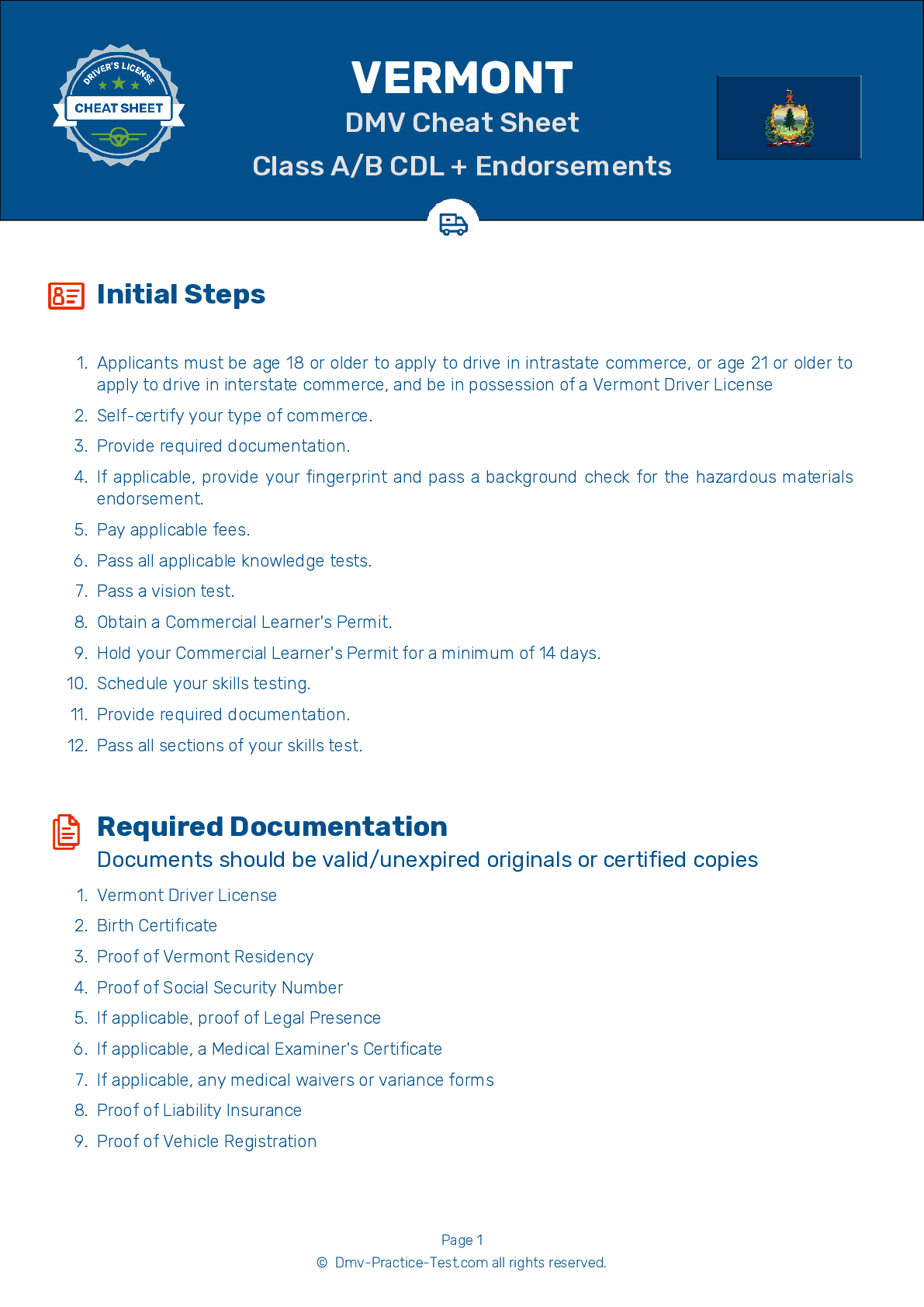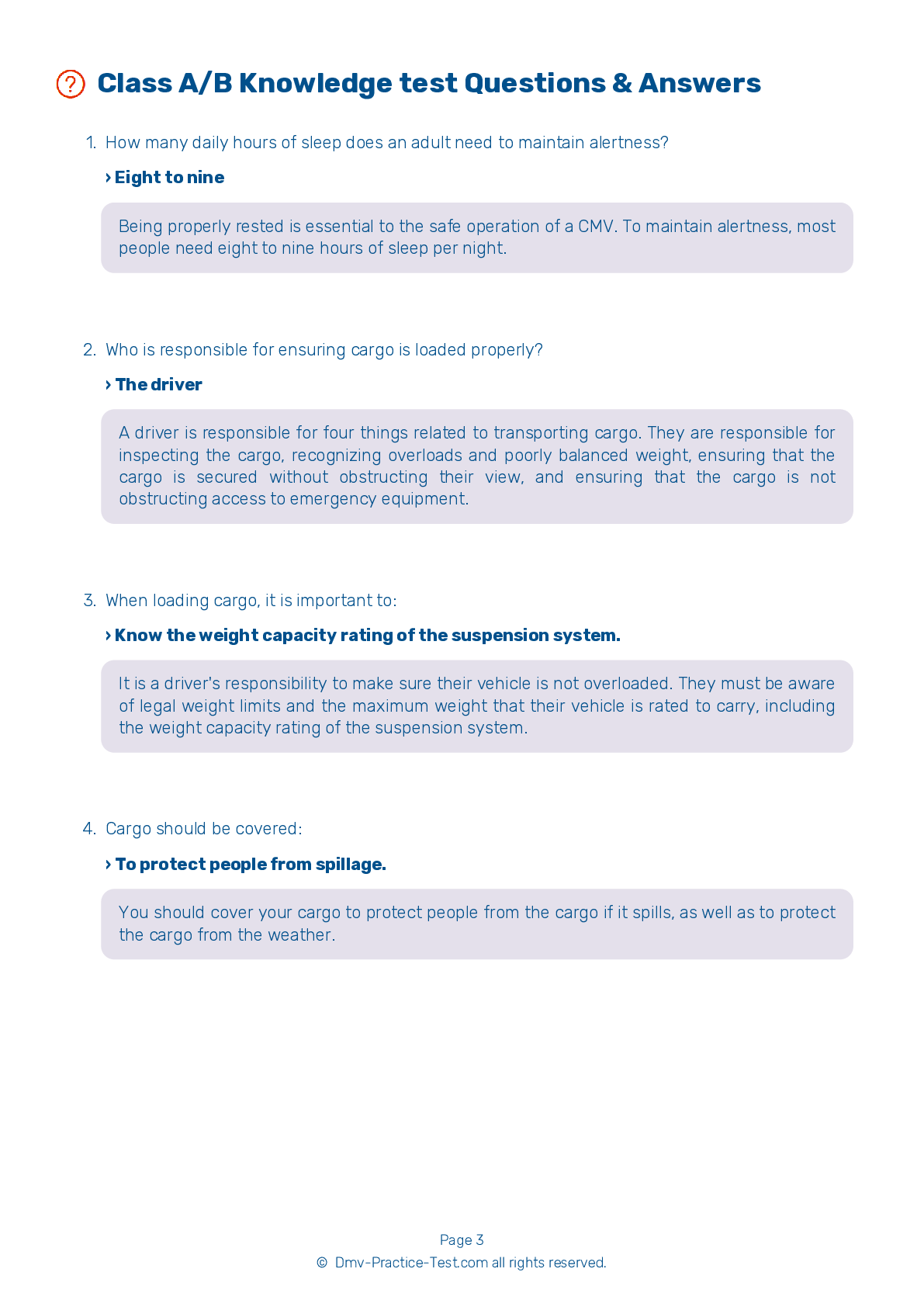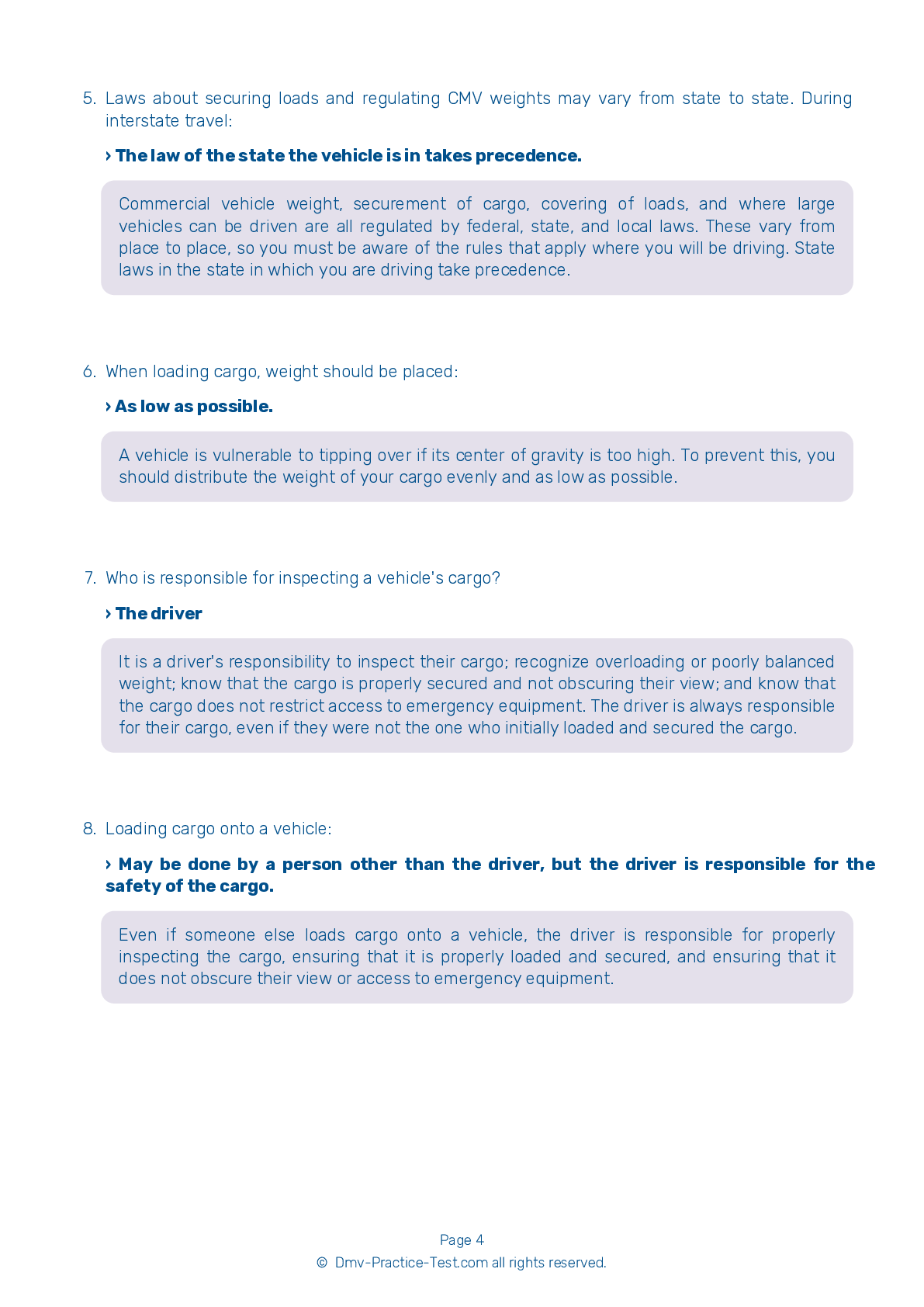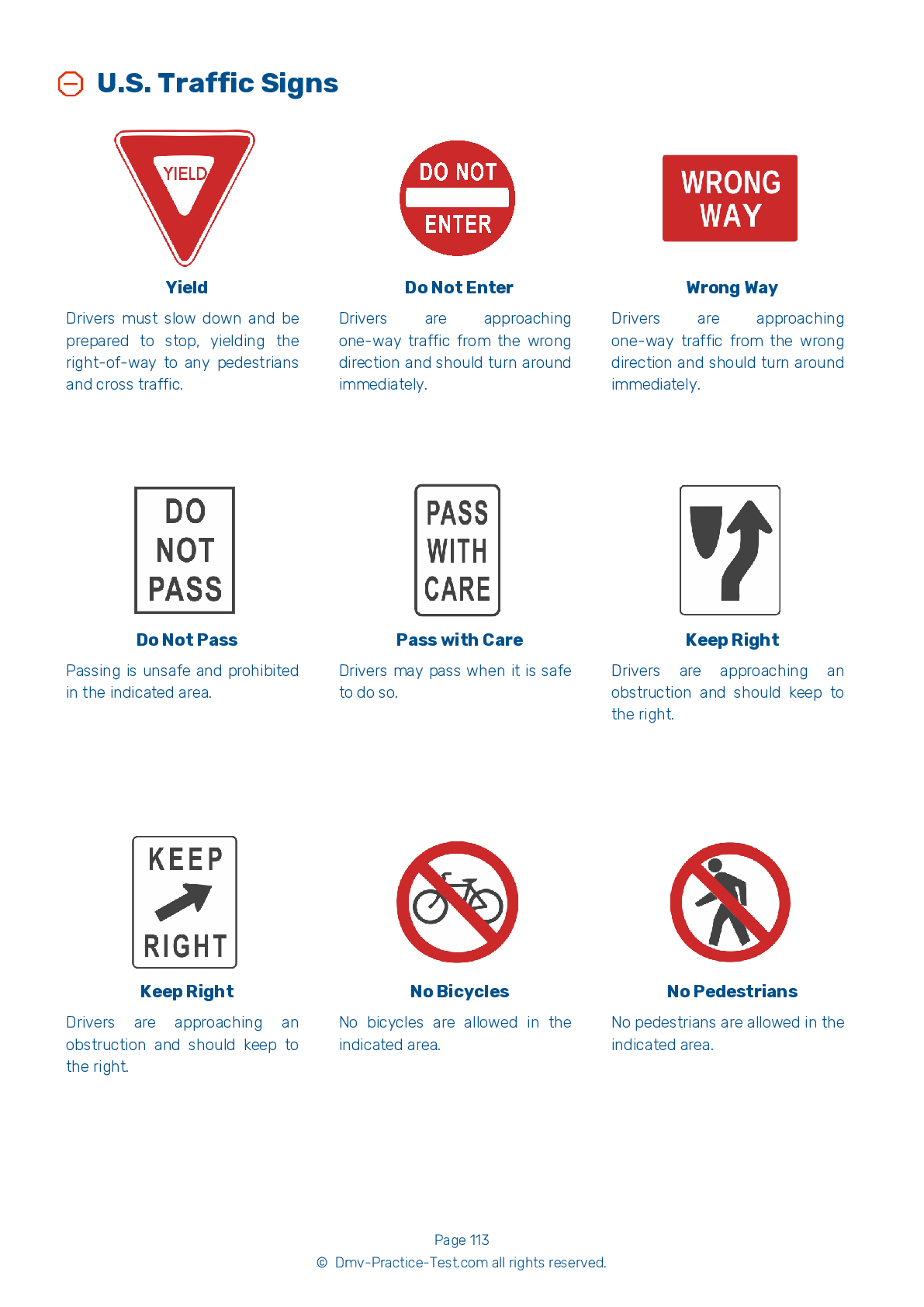Knowledge Test Class B #2
Class B Driving Test | Vermont 2026 #2 Page 3 of 7
Train for FREE online with our Vermont class B license test. The official exam test consists of several obligatory parts, with all of them checking your knowledge of different blocks of road rules. If you need to obtain a VT CDL class B permit in 2026, practice as much as possible. Free sample tests published on our website will help you check and improve your knowledge and boost your grades. Please bear in mind that CDL class B requirements may vary from state to state.
50
40
20
15 . To affect a vehicle, ABS:
Anti-lock brakes on only a single axle still provides a driver with more control while braking than they would have without any anti-lock brakes.
16 . As part of the vehicle inspection test, a CDL applicant will be asked to:
The vehicle inspection test will include a check of the oil level. You must show that it is within a safe operating range.
17 . How many daily hours of sleep does an adult need to maintain alertness?
Four to five
Being properly rested is essential to the safe operation of a CMV. To maintain alertness, most people need eight to nine hours of sleep per night.
18 . In order to receive a hazardous materials endorsement, a person must complete all of the following, except:
To obtain a hazardous materials endorsement, you must pass the HazMat knowledge test; undergo a Federal Security Threat Assessment; provide proof of U.S. citizenship or permanent residency; and undergo an FBI fingerprint check and federal criminal history background check.
19 . When operating a truck requiring a CDL:
You are required to wear a seat belt, but only if you are driving a tank vehicle.
A driver's seat should always be equipped with a seat belt. You must wear a seat belt at all times while operating a CMV.
20 . If a load is 40 feet long, the minimum number of tie-downs required to secure the load is:
On flatbed trailers and trailers without sides, cargo must be tied down. There should be at least one tie-down for every 10 feet of cargo. Regardless of the size of the cargo, at least two tie-downs must be used.
21 . In a vehicle with dual air brakes, a leak in one system ____ the second system.
A dual air brake system is made up of two separate air brake systems. If there is an air leak in one system, it may not affect the other.
2026 Vermont | Frequently Asked Questions
In Vermont, to acquire a CDL Tank endorsement, you must first have a Commercial Driver's License (CDL). Then, you will need to study for the tank endorsement exam using the Vermont CDL manual. Once you're ready, schedule and pass the written knowledge test at a DMV office. The test will cover topics like inspecting tank vehicles and safe driving rules.
To obtain a CDL Tank license in Vermont, you must first possess a Commercial Driver's License (CDL). Then, prepare for the tank endorsement exam using the Vermont CDL manual. The next step is to schedule and pass the written knowledge test at your local DMV office. The test will cover topics such as inspecting tank vehicles and rules for safe driving.
While Vermont doesn't specifically require training or experience for a CDL Tank endorsement, it's recommended to study the tank vehicle section of the Vermont CDL manual thoroughly. The endorsement exam will cover topics like inspecting tank vehicles and safe driving rules. Practical experience or training can certainly help in understanding these topics and successfully passing the test.
Yes, an additional written knowledge test is required for the CDL Tank endorsement in Vermont. This test focuses on the safe operation and inspection of tank vehicles. It's recommended to study the specific section in the Vermont CDL manual related to tank vehicles to prepare for this exam. The test can be taken at your local DMV office.
The written test for the CDL Tank endorsement in Vermont covers several subjects. These include the inspection of tank vehicles, understanding the effects of liquid surge on vehicle handling, and the rules for safe driving. The test also covers specifics about different types of tanks and their unique handling requirements. It is designed to ensure safe operation of tank vehicles.
The CDL Tank endorsement assessment doesn't include specific skills or maneuvers as it is a written test. It covers topics such as safe driving techniques for tank vehicles, understanding the vehicle's high center of gravity, and managing surge effect. The test checks your knowledge on liquid-specific regulations and handling, not practical driving maneuvers.
Yes, there are constraints for drivers with a CDL Tank endorsement in Vermont. These include restrictions on the type of tank vehicles that can be operated based on the specific endorsements on the license. Additionally, drivers must comply with federal and state regulations regarding hazardous materials transport. Violations can result in fines, license suspension, or disqualification from holding a CDL.
No, in Vermont it's illegal to transport liquid or gas materials in a tank vehicle without a valid CDL Tank endorsement. This endorsement is required to ensure that drivers have the necessary skills and knowledge to safely operate tank vehicles and handle potential hazards. Violations can lead to serious penalties, including fines and suspension of the driver's commercial license.
To add the CDL Tank endorsement to your current license in Vermont, you will need to complete the necessary application and pay the required fee. You may also need to pass a knowledge test and a skills test specific to tank vehicles. It is not a automatic addition, so a fresh application is necessary for this endorsement.
Yes, handling hazardous materials with a CDL Tank endorsement in Vermont involves specific regulations. Drivers must pass a HazMat knowledge test, undergo a TSA background check, and comply with federal safety regulations. This includes proper loading, unloading, and securing of hazardous materials, as well as emergency response procedures in case of an accident or spill.



